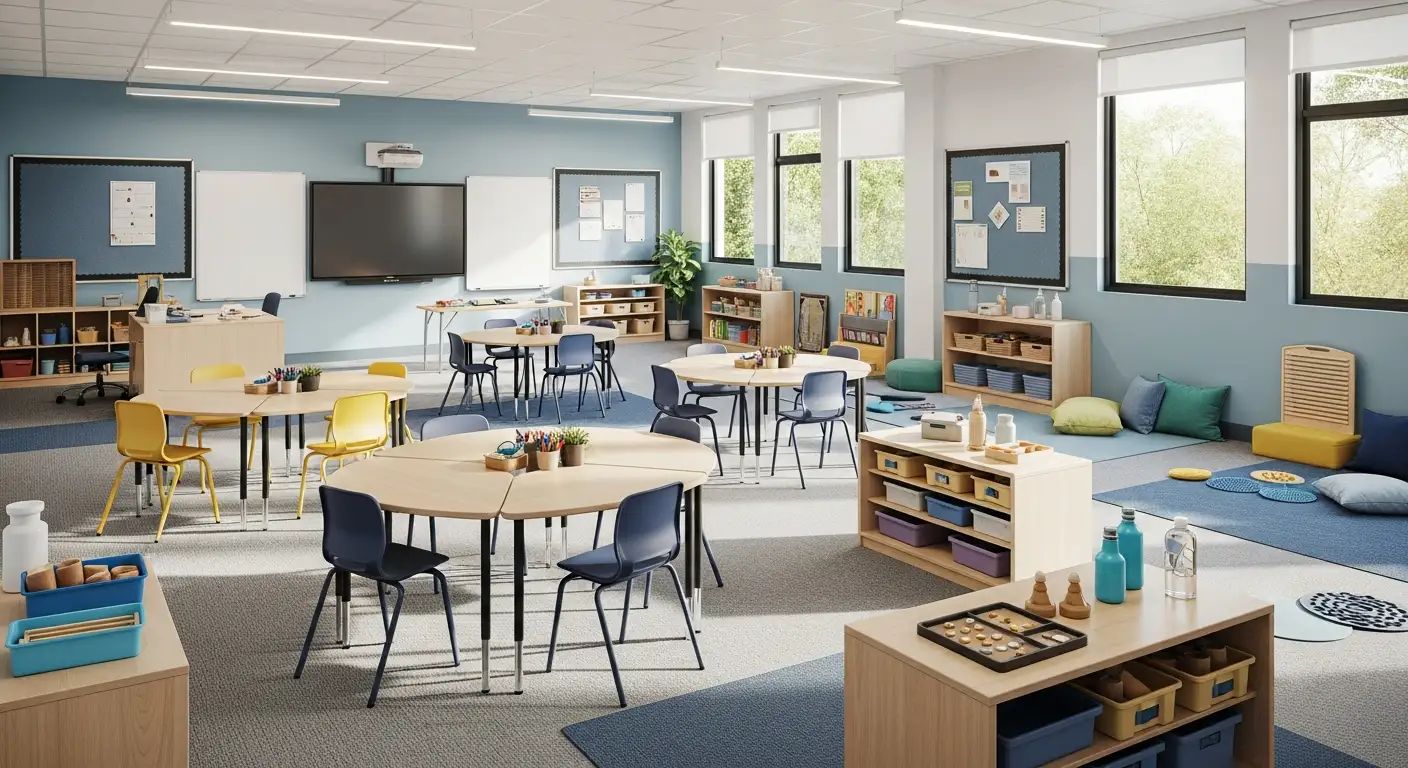Understanding ABA Therapy and Its Impact on Child Development
Applied Behavior Analysis (ABA) is widely recognized as the gold standard for supporting children with autism spectrum disorder (ASD). Its structured approach aims to improve essential adaptive skills—covering communication, social engagement, and daily living—by teaching behaviors through evidence-based techniques. This article explores the significant role of ABA therapy in empowering children to achieve greater independence, with a focus on its methods, benefits, and supporting research.
Core Principles and Objectives of ABA Therapy
What is the role of ABA therapy in improving adaptive skills for children?
Applied Behavior Analysis (ABA) therapy is a well-established, evidence-based approach designed to enhance various skills vital for children's development. Its primary goal is to help children gain independence by teaching essential life skills such as communication, social interaction, and self-care.
ABA therapy uses personalized, structured interventions that focus on reducing negative behaviors and promoting positive, functional behaviors. Techniques such as discrete trial training, natural environment teaching, and task analysis are employed to facilitate learning. These methods involve breaking down complex skills into manageable steps and reinforcing desired behaviors consistently.
A core component of ABA involves positive reinforcement. For example, rewarding a child for brushing their teeth or saying “thank you” encourages them to repeat these behaviors. Visual supports, real-life scenarios, and structured routines help children generalize skills across different settings like home, school, or community environments.
In addition to daily living skills, ABA addresses academic and social competencies. Children learn to follow instructions, understand social cues, make friends, and engage in meaningful social interactions. This comprehensive approach fosters confidence and helps children navigate daily challenges more effectively.
Ultimately, ABA aims to develop skills that improve the child's quality of life. By promoting independence in activities such as dressing, eating, and safety awareness, ABA helps children become more self-sufficient and better prepared for the demands of everyday life.
More about ABA principles in child development
The principles of ABA are grounded in behavioral science and focus on understanding how behaviors are learned and maintained. This scientific foundation ensures that interventions are systematic, measurable, and tailored to each child's unique needs, supporting their growth into confident, independent individuals.
Understanding Adaptive Skills in Children with Autism
What Are Adaptive Skills?
Adaptive skills refer to the practical, everyday abilities that enable children to effectively manage personal and social responsibilities. These skills include communication, self-care, social interactions, and ability to adapt to various environments. Developing strong adaptive skills is essential for children to become independent and confident in daily life.
In children with autism, these skills can often be challenging to acquire. Difficulties with communication, social cues, and managing routines may hinder their ability to perform everyday tasks. Therefore, targeted interventions are necessary to foster these essential behaviors.
How Does ABA Therapy Benefit Children with Autism in Developing Adaptive Skills?
Applied Behavior Analysis (ABA) therapy plays a significant role in helping children with autism develop crucial adaptive skills. It employs a personalized, evidence-based approach that uses positive reinforcement to encourage desired behaviors.
Throughout therapy sessions, children learn to communicate more effectively, whether through speech, sign language, or augmentative communication devices. They also acquire self-care skills like dressing, toileting, and feeding. Social skills, such as making friends, understanding social cues, and engaging in conversations, are systematically taught in structured environments.
One of the strengths of ABA is its emphasis on data collection and analysis. Therapists monitor progress closely, adjusting strategies to ensure each child’s unique needs are met. This structured process helps children develop attention, focus, memory, and problem-solving skills. These cognitive benefits further support their ability to function independently.
Early intensive ABA intervention has demonstrated long-term benefits. Children who start therapy at a young age often show significant improvements in language, cognitive abilities, and adaptive behaviors. With consistent support, many children gain the confidence to participate more actively in social and daily activities.
In summary, ABA therapy enhances the development of adaptive skills by creating a conducive learning environment tailored to each child's needs. This approach fosters independence, improves quality of life, and helps children with autism reach important developmental milestones.
| Skill Area | Examples of Skills Taught | How ABA Supports Development |
|---|---|---|
| Communication | Verbally expressing needs, using gestures | Reinforcement of functional communication methods |
| Self-care | Dressing, grooming, toileting | Structured teaching with practice and positive feedback |
| Social Interaction | Sharing, making eye contact, initiating conversations | Role-playing, social stories, prompting |
| Daily Living | Following routines, safety awareness | Real-life scenarios, reinforcement, and routine building |
| Cognitive Skills | Problem-solving, attention, memory | Interactive activities and targeted teaching |
By fostering these skills through structured and personalized interventions, ABA therapy aims to prepare children with autism for more independent and fulfilling lives.
Techniques and Strategies in ABA for Skill Development

What techniques are used in ABA therapy to enhance adaptive skills?
Applied Behavior Analysis (ABA) employs a range of proven methods designed to foster independence and functional skills in children with autism. These techniques focus on reinforcing positive behaviors, teaching new skills through systematic procedures, and promoting generalization of skills across different settings.
One foundational approach is positive reinforcement. Desired behaviors, such as dressing independently or following safety instructions, are rewarded to increase their occurrence. This encourages children to repeat beneficial actions, gradually building their independence.
Task analysis and chaining are also essential. These techniques break down complex skills like brushing teeth or using utensils into smaller, manageable steps. Each step is taught sequentially, allowing children to master each component before progressing, leading to mastery of the overall activity.
Modeling is another effective method, where therapists or parents demonstrate appropriate behaviors for the child to imitate. This visual example helps children learn social and functional skills by observation.
To promote learning in real-life contexts, ABA incorporates natural environment teaching (NET) and incidental teaching. These strategies utilize everyday situations—like grocery shopping or playing—to teach skills in relevant settings, boosting motivation and functional use.
Communication skills are vital for adaptive behavior. Strategies such as functional communication training (FCT) teach children how to express their needs effectively, reducing frustration. Visual supports, picture exchange communication systems (PECS), and augmentative and alternative communication (AAC) devices further aid children in developing verbal and non-verbal communication, which are critical for social participation.
The combination of these evidence-based techniques in ABA creates personalized programs that adapt to each child's unique needs. The goal is to develop essential life skills—such as self-care, social interaction, and following safety rules—thereby enhancing daily functioning and independence.
| Technique | Description | Typical Uses |
|---|---|---|
| Positive Reinforcement | Reward desired behaviors to encourage recurrence. | Dressing independently, social interactions |
| Task Analysis & Chaining | Breaking down complex tasks into manageable steps and teaching them sequentially. | Cooking, hygiene routines |
| Modeling | Demonstrating behaviors for imitation. | Social skills, communication |
| Natural Environment Teaching (NET) | Teaching skills in everyday settings to promote real-world use. | Shopping, play |
| Functional Communication Training | Teaching effective ways to express needs or feelings. | Requesting, social exchanges |
| Visual Supports & AAC | Using visual cues or communication devices to aid understanding and expression. | Speech delays, non-verbal children |
Such techniques are supported by scientific research and are integral to the personalized, structured approach of ABA therapy, which aims to foster independence, confidence, and success in daily life.
Effectiveness of ABA in Promoting Communication, Social Skills, and Self-care

How effective is ABA therapy in promoting communication, social skills, and self-care?
Applied Behavior Analysis (ABA) has demonstrated strong effectiveness in improving essential daily skills among children with autism. Scientific research supports that ABA models and techniques—such as positive reinforcement, structured teaching, and visual aids—are highly successful in fostering communication and social interaction.
Research involving over 100 boys with autism, aged 4 to 11, showed significant improvements in these areas after participating in ABA interventions. The program, which included eight individual sessions held twice a week, helped children develop both verbal and non-verbal communication skills. This meant they could initiate conversations, express emotions, and understand social cues more effectively.
ABA therapy emphasizes teaching self-care tasks such as dressing, feeding, grooming, and toileting through tailored strategies backed by data collection. Children learn to perform daily routines independently, boosting their confidence and reducing frustration.
Early intervention with ABA maximizes developmental gains, and the structured, personalized approach ensures that each child’s unique needs are met. During sessions, children engage in play and social activities that foster relationship-building, making social skills like making friends and understanding social rules easier to grasp.
Parent involvement is also a vital component. Families are provided with strategies to reinforce skills at home, which sustains progress beyond therapy sessions. This collaborative effort has been shown to improve overall adaptive functioning and independence.
In sum, ABA delivers measurable results. It not only facilitates communication and social skill growth but also supports children’s ability to perform daily living tasks. This comprehensive approach ultimately enhances their quality of life, helping them become more independent and confident individuals.
Scientific Evidence Supporting ABA's Effectiveness
Research studies and data provide robust support for the use of Applied Behavior Analysis (ABA) therapy in enhancing children’s adaptive and social skills. Multiple investigations have documented significant improvements in areas like communication, daily living, and social interaction.
In particular, data indicate that between 63% and 88% of children show meaningful developmental gains following ABA interventions. Meta-analyses of these studies have consistently demonstrated that structured ABA programs, especially when implemented early and over an extended period, can positively influence language skills, social functioning, and overall cognitive growth.
Specific research highlights include statistically significant elevation in adaptive behavior scores, notably in children who initially exhibited lower baseline skills. After approximately 24 months of consistent ABA treatment, these children often show remarkable progress.
The strength of ABA lies in its foundation of scientifically proven techniques such as positive reinforcement, teaching skills in natural environments, and involving parents in therapy. These methods contribute to tangible improvements in behavioral and developmental outcomes.
Overall, the accumulating evidence underscores that ABA is not only effective but also adaptable across different individual needs, supporting its standing as a gold-standard approach for fostering meaningful progress in children with autism.
Personalized and Holistic Approach of ABA Programs
 ABA therapy programs are carefully tailored to meet each child's unique needs. Therapists begin with comprehensive assessments to understand individual strengths and challenges, creating customized intervention plans that target specific skills such as communication, social interaction, or self-care.
ABA therapy programs are carefully tailored to meet each child's unique needs. Therapists begin with comprehensive assessments to understand individual strengths and challenges, creating customized intervention plans that target specific skills such as communication, social interaction, or self-care.
Regular evaluations and ongoing data collection are central to personalized ABA programs. These assessments help monitor progress over time, allowing adjustments to therapy strategies as needed. This dynamic approach ensures that treatment remains relevant and effective, aligning with each child's developmental pace.
Therapists use a variety of techniques, including positive reinforcement and structured activities, to encourage skill acquisition and behavioral improvements. Through continuous monitoring, goals are refined, and new areas for growth are identified, making the therapy adaptable and responsive.
The ultimate aim is to promote independence, confidence, and success in daily life. Personalized ABA programs not only improve targeted skills but also support emotional well-being and social functioning, empowering children to reach their full potential.
For more insights, one can explore the topic of "customization in ABA therapy programs," which highlights the importance of adapting interventions to individual needs for optimal results.
Delivery Settings and Family Involvement

In what settings is ABA therapy delivered and how does family involvement contribute?
Applied Behavior Analysis (ABA) therapy is flexible and can be provided across various environments to best support each child's needs. Common settings include home-based programs and school-based services.
Home-based ABA therapy offers children the chance to practice new skills within their familiar environments. This setting helps reinforce behaviors in daily routines such as dressing, feeding, or safety awareness. It also allows for close collaboration with family members, who are trained to implement strategies and reinforce progress outside formal sessions.
School-based ABA programs are designed to promote social integration and academic development. These programs help children navigate classroom environments, understand social cues, and participate in group activities, fostering independence in educational settings.
Family involvement is crucial in maximizing the benefits of ABA therapy. Caregivers and family members are actively engaged through training and guidance provided by therapists. This empowers them to reinforce positive behaviors and strategies consistently.
Training parents and caregivers helps create a seamless learning environment, encouraging skill practice in natural settings and daily routines.
With active participation, families can help maintain progress achieved during therapy sessions, ensuring that skills are generalized and sustained over time.
Collaboration between therapists and families involves sharing progress data, adjusting intervention strategies, and setting achievable goals together. This teamwork enhances the overall effectiveness of ABA therapy.
In summary, delivering ABA in various settings combined with strong family involvement creates a supportive network that promotes continuous development. It enables children to develop essential life skills, gain independence, and thrive across different areas of their daily lives.
| Setting Type | Focus and Benefits | Role of Family Involvement |
|---|---|---|
| Home-based | Reinforces skills in familiar routines | Training and guiding families to implement strategies |
| School-based | Supports social and academic skills | Collaborative planning and consistent reinforcement |
| Community settings | Promotes generalization of skills | Encouragement and participation in community activities |
| Clinic/center-based | Structured therapy environment | Monitoring progress and coordinating with caregivers |
Effective delivery of ABA therapy involves these various environments, with the active engagement of families. This partnership maximizes the child's potential to learn, adapt, and succeed in everyday life.
Structured Environments and Independence Goals
How do structured environments in ABA foster independence?
Structured environments are a cornerstone of Applied Behavior Analysis (ABA) therapy. These settings are carefully designed to promote independence by providing consistent routines, visual supports, and clearly defined tasks. Such organization helps children understand expectations and navigate their daily activities with confidence.
ABA programs prioritize teaching functional skills like dressing, feeding, toileting, and safety awareness. These skills are often practiced through real-life scenarios combined with reinforcement strategies, encouraging children to repeat and master each task.
As children progress and gain proficiency, they develop greater confidence and autonomy. They begin managing daily routines with less adult assistance, which enhances their ability to function independently in various settings.
This gradual build-up of self-reliance aligns with ABA’s goal of improving quality of life. By fostering independence in self-care and social interactions, ABA helps children achieve a sense of competence and prepare for greater inclusion in their communities.
Conclusion: ABA as a Transformative Therapeutic Approach
 ABA therapy offers numerous advantages for children with autism. It focuses on enhancing social, communicative, and daily living skills through structured and positive reinforcement strategies. As a science-backed approach, ABA consistently demonstrates improvements in adaptive behaviors, emotional regulation, and independence. These skills help children manage daily activities like dressing, following instructions, and engaging with others, leading to increased confidence.
ABA therapy offers numerous advantages for children with autism. It focuses on enhancing social, communicative, and daily living skills through structured and positive reinforcement strategies. As a science-backed approach, ABA consistently demonstrates improvements in adaptive behaviors, emotional regulation, and independence. These skills help children manage daily activities like dressing, following instructions, and engaging with others, leading to increased confidence.
Research findings highlight that ABA not only supports immediate skill development but also promotes long-term growth, preparing children for greater participation in home, school, and community settings. Families benefit from targeted strategies, empowering them to reinforce learning and manage behaviors effectively at home. Overall, ABA therapy serves as a powerful tool to improve quality of life, fostering independence and enabling children with autism to reach their full potential.
Embracing the Power of ABA for Child Development
In summary, ABA therapy stands as a scientifically validated and highly effective approach to developing vital adaptive skills in children with autism. Its personalized, structured interventions enhance communication, social interactions, and independence, laying a foundation for greater participation in everyday activities. With ongoing research supporting its benefits, ABA continues to transform the lives of children and their families by promoting resilience, confidence, and lifelong success.
References
- The effectiveness of applied behavior analysis program training on ...
- Why Does ABA Help Children With Autism? - LeafWing Center
- Benefits of ABA Therapy for Children - First Step Arkansas
- Applied Behavior Analysis Builds Life Skills for Children
- Applied Behavior Analysis (ABA) | Autism Speaks
- Benefits of ABA Therapy for Children with Autism
- Enhancing Social Skills Through ABA Therapy
- How ABA Therapy Enhances Social Skills in Children with ASD
- 10 Common ABA Therapy Techniques



